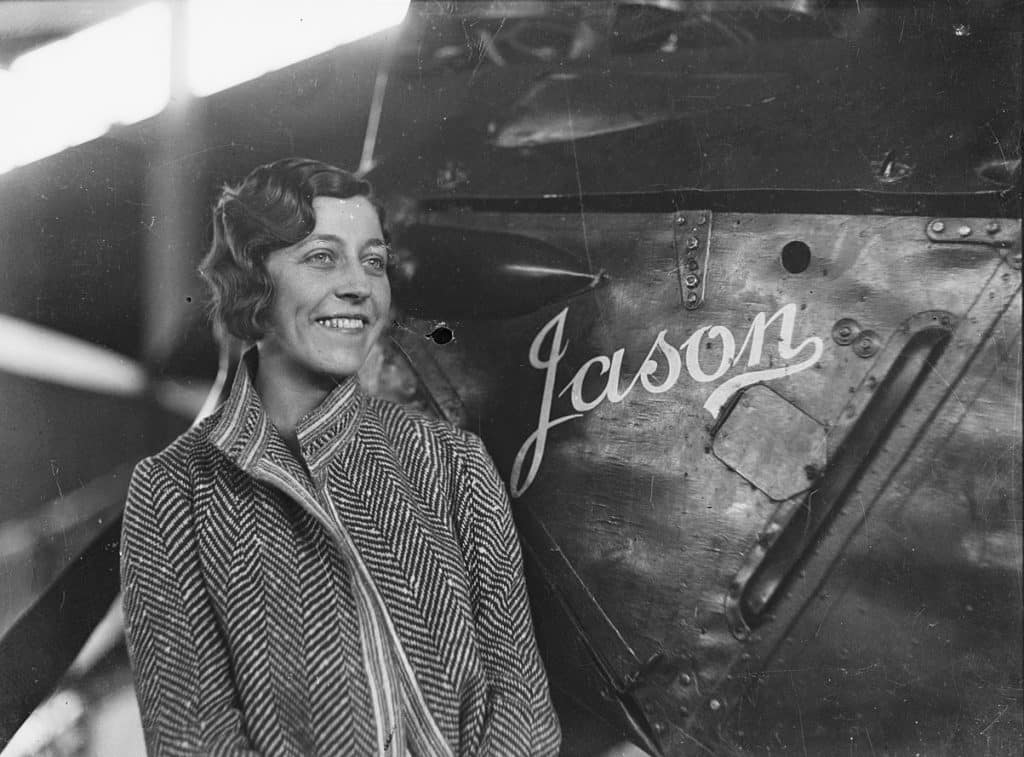A Daring Dream Takes Flight: The Story of Amy Johnson
While the exact spark that ignited Amy Johnson‘s passion for aviation remains unclear, the context of her time offers some possibilities. The early 1900s witnessed a surge in fascination with flight. Pioneering feats like Louis Blériot’s crossing of the English Channel and Charles Lindbergh’s transatlantic journey captured the public imagination. Johnson, a young woman with an adventurous spirit (as evidenced by her own quote: “Had I been a man I might have explored the Poles or climbed Mount Everest”), may have been swept up in this excitement. Aviation, a new and challenging frontier, could have been a natural outlet for her desire for exploration and pushing boundaries.
A Life in the Skies
Born in the East Riding of Yorkshire, Johnson’s passion for aviation blossomed after graduating with an economics degree from the University of Sheffield. In 1929, she obtained her pilot’s license and became the first British woman to hold a ground engineer’s license, demonstrating both her flying skills and technical aptitude.
Solo Flights and Global Recognition
Johnson’s thirst for adventure propelled her to attempt a series of record-breaking solo flights. In 1930, she became the first woman to fly solo from England to Australia, a grueling journey of approximately 11,000 miles that captured the world’s attention. This historic feat earned her the prestigious CBE and cemented her status as a national heroine.
Challenges Faced as a Woman in Aviation
As a woman in the 1920s and 30s, Johnson undoubtedly faced significant challenges in the male-dominated world of aviation. Flight training and aircraft ownership were expensive endeavors, and social norms often discouraged women from pursuing such activities. Johnson likely had to overcome financial hurdles and societal expectations to achieve her goals. Aviation clubs and competitions were primarily male spaces. She may have encountered skepticism or even hostility from male peers who doubted her abilities. To gain acceptance and respect, Johnson would have needed to constantly demonstrate exceptional skill and competence. Every successful flight would have been a victory against these ingrained biases.
Amy Johnson’s Aircraft and the Daring Do of Early Aviation
Amy Johnson flew a variety of aircraft throughout her career. Some notable examples include the de Havilland DH.60 Moth, a nimble biplane she used for her solo flight to Australia, and the Percival Vega Gull, a faster monoplane she used for record attempts. Early aircraft were less sophisticated and reliable than modern planes. Navigation was primarily based on visual landmarks and dead reckoning. Johnson’s flights involved contending with harsh weather conditions, limited fuel range and the inherent dangers of pioneering new routes.
Collaboration and Continued Success
While some of Amy Johnson’s most notable flights were solo endeavours, she also collaborated with other pilots. Most famously, she flew alongside her husband, Jim Mollison, attempting daring transatlantic crossings and pushing the boundaries of aviation technology and endurance.
Beyond Records: A Legacy of Inspiration
Amy Johnson’s impact extended far beyond record-breaking flights. She became a role model for aspiring female aviators, demonstrating that women could excel in a traditionally male-dominated field. Furthermore, her dedication to safety and advocacy for technological advancements contributed significantly to the overall progress of aviation.
World War II and a Tragic Loss
With the outbreak of World War II, Amy Johnson answered the call to serve her country. She joined the Air Transport Auxiliary (ATA), a vital organisation responsible for ferrying aircraft across Britain. Tragically, in 1941, while piloting an aircraft for the ATA, Johnson’s plane disappeared over the Thames Estuary. The cause of the crash remains a subject of debate, but her contributions to the war effort are not forgotten.
A Lasting Legacy
Amy Johnson’s life, though tragically cut short, continues to inspire generations. Her courage, determination, and pioneering spirit remain a testament to human potential. Museums and memorials around the world honor her achievements, ensuring her legacy is preserved for future generations.
